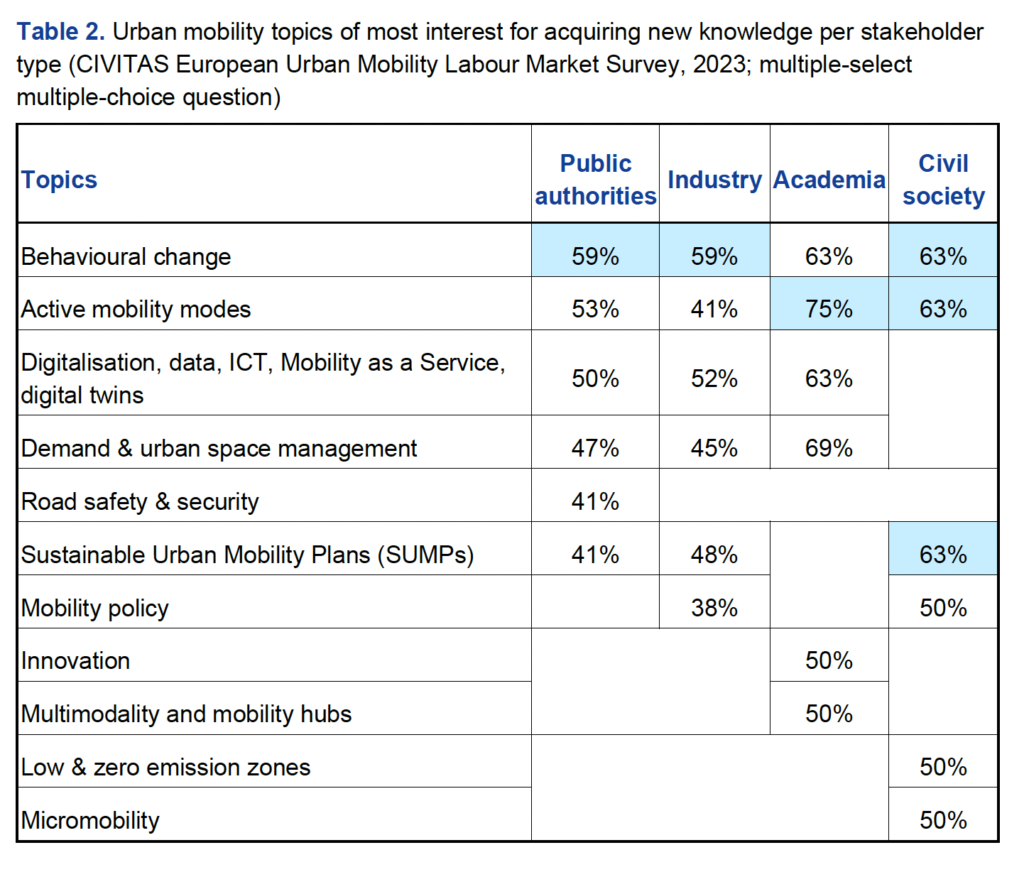A new report elaborates on the CIVITAS European Urban Mobility Labour Market Research about which skills and knowledge are needed by professionals working at and for urban planning authorities.
The report showcases an analysis of the current status quo, trends, and developments of the urban mobility labor market, needs for knowledge and skills, the urban mobility workforce, and capacity-building considerations targeting European urban mobility professionals.
New EU Urban Mobility Framework
According to the New EU Urban Mobility Framework, mobility is critical to social inclusion and an important determinant of human well-being, especially for disadvantaged groups. At the same time, transport is recognized as an essential service in the European Pillar of Social Rights. Moreover, it points out that to achieve the EU’s strategic objectives in several critical fields (e.g., climate, environment, digitization, and health).
The EU needs to take more decisive action on urban mobility to shift from the current approach based on traffic flows to an approach based on moving people and goods more sustainably.
The New Urban Mobility Framework also stresses that to achieve this shift, a stronger collective/public transport backbone, better active mobility (e.g., walking, cycling) options, and efficient zero-emission urban logistics and last-mile deliveries are needed. Multimodality, zero-emission mobility, digitization, and connected and automated mobility are identified as critical elements in this process.
EU employment
Transport is a significant contributor to EU employment, employing more than 6 million people in 2021 and representing 3.1% of total employment in the EU. When considering the postal and courier activities and warehousing and supporting activities, this increases to 10 million employees and 5.2% of the total workforce. Land transport (road and rail) was the subsector with the highest number of people employed in 2021, accounting for 89.6% of those employed in the transport sector. Water transport (inland waterways or maritime) and air transport only accounted for 4.7% and 5.7%, respectively.
Digital transition
The digital and green twin transition and new and disruptive technologies like Artificial Intelligence and robotics will impact the labor market, and urban mobility will not be an exception. Some jobs will disappear, others will be transformed, and many new jobs will be created.
Other relevant trends are urbanization, the aging population, autonomous and unmanned transport systems, city data and services digitalization, climate change, and resilience of areas.
Skill and expertise
Future urban mobility practitioners must develop skills and expertise in all aspects of urban mobility and become proficient and competitive in these fields. This will help ensure that the EU can effectively realize sustainable, efficient, and climate-neutral mobility while simultaneously providing the continued relevance of mobility and transport sectors for the EU economy.
The most important topics will be multimodality and mobility hubs, behavioral changes, road safety, mobility policies and digitalization, integrated and inclusive planning, urban space planning, active mobility (walking and biking), city logistics, public transport, and sustainable urban mobility plans.
For soft skills, data from the survey shows that effective communication and cooperation with stakeholders and public participation and co-creation are the most relevant areas in which professionals need skills to be prepared for future mobility labor market demands.

Based on the outcomes of this research, the upcoming capacity-building activities within CIVITAS MUSE (CIVITAS Coordination and Support Action 2023–2027) will be determined. This research targets European urban mobility professionals working at local, regional, and national public urban planning authorities and consultants, industry, civil society organizations, and knowledge and research institutes.
Source: CIVITAS
